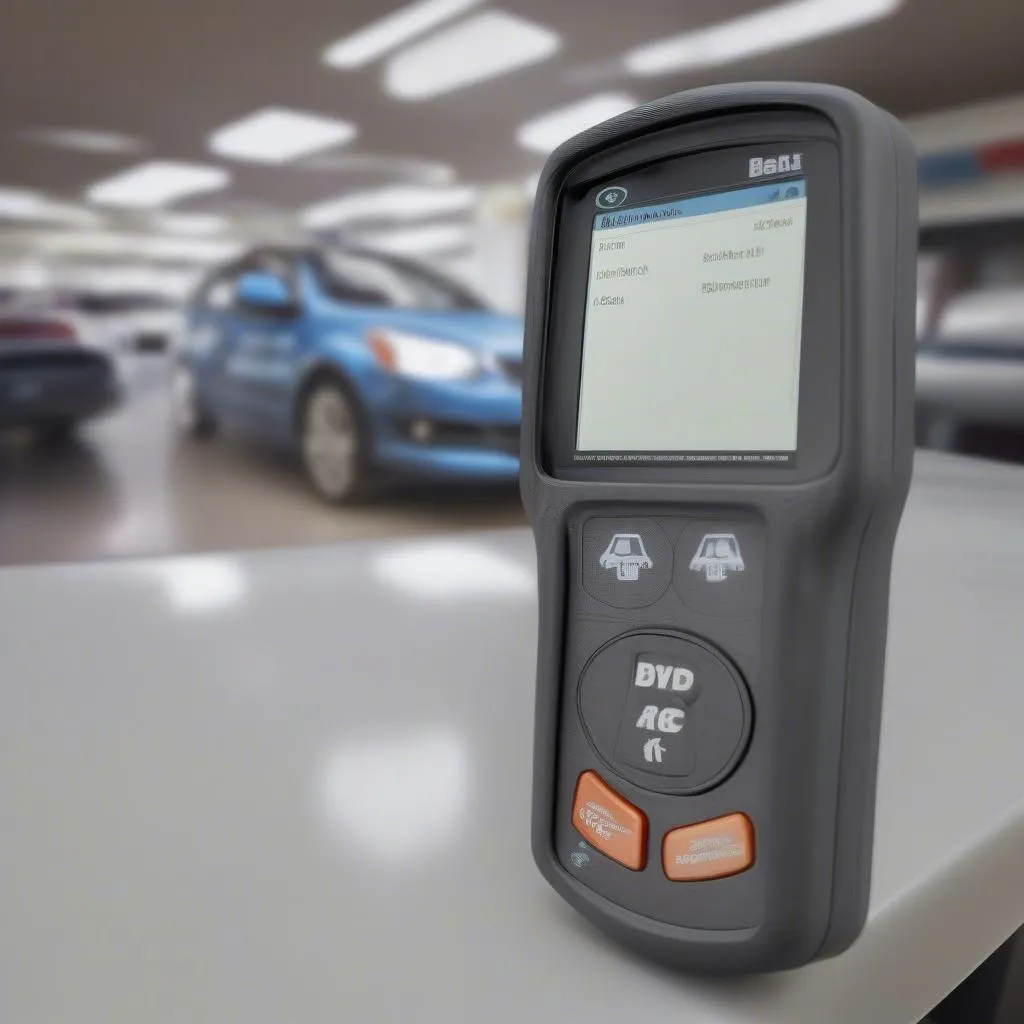Have you ever wondered how mechanics and technicians can diagnose car problems so quickly and accurately? It’s not magic; it’s the power of technology! One of the most powerful tools in their arsenal is **scan network tools**. These tools are like the doctor’s stethoscope for your car, providing valuable insights into its inner workings.
The Importance of Scan Network Tools
**Scan network tools** are essential for modern car repair and diagnostics. They allow technicians to:
- Diagnose and troubleshoot issues: These tools can detect and analyze a wide range of problems, from engine malfunctions to faulty sensors.
- Read and clear trouble codes: When a car experiences a problem, it stores a code that indicates the cause of the issue. Scan network tools read these codes and help technicians identify the problem accurately.
- Monitor live data: These tools can provide real-time information about various car systems, such as engine speed, fuel pressure, and transmission temperature. This information is crucial for diagnosing performance issues and preventing future problems.
- Program and reprogram modules: Modern cars are equipped with various control modules, which need to be programmed correctly to ensure proper function. Scan network tools allow technicians to reprogram these modules for various tasks, such as key replacement, tire pressure monitoring system setup, and adapting the car to new components.
How Scan Network Tools Work
Think of a car as a complex network of interconnected systems. **Scan network tools** act as a bridge between your car and the technician’s computer, allowing them to access and analyze data from the car’s various control modules. These tools communicate with the car’s onboard diagnostics (OBD) system using a standardized protocol called **OBD-II** (On-Board Diagnostics-II).
This communication allows the technician to:
- Read and interpret diagnostic trouble codes (DTCs): These codes are stored by the car’s control modules to indicate potential problems.
- Access real-time data: This data allows technicians to monitor key parameters of the car’s operation, such as engine speed, fuel consumption, and air-fuel ratio.
- Perform various diagnostic tests: These tests help pinpoint the root cause of a problem by simulating specific conditions.
Types of Scan Network Tools
There are several different types of scan network tools available, each with its own features and capabilities. Here are some of the most common types:
1. Generic Scan Tools:
- These are the most basic type of scan tool and are often available at auto parts stores.
- They can read and clear trouble codes but may not offer advanced features like live data monitoring or programming functions.
- Example: Autel MaxiCOM MK808
2. Dealer-Level Scan Tools:
- These tools are designed specifically for use by car dealerships and are often more expensive than generic scan tools.
- They offer a wider range of functions, including access to more complex diagnostic systems, programming capabilities, and advanced data analysis features.
- These tools are crucial for diagnosing and repairing complex modern cars.
- Example:
 dealer-scanner-european-cars
dealer-scanner-european-cars
3. Specialty Scan Tools:
- These tools are designed for specific car brands or systems.
- For example, you might find a specialty scan tool for BMWs, or a tool designed specifically for airbag systems.
- These tools often offer the most comprehensive diagnostics for specific models or systems.
The Importance of Using the Right Scan Network Tool
Using the right scan network tool is essential for accurate diagnostics and repairs. **Generic scan tools** may not be able to access all the necessary information for some modern cars, while **specialty scan tools** can provide more in-depth analysis for specific models or systems.
Choosing the right tool depends on the specific make, model, and year of the car being diagnosed, as well as the type of problem being addressed.
For example, if you are dealing with a complex issue in a European car, a **Dealer Scanner For European Cars** might be the best choice.
 mechanic-using-scan-tool
mechanic-using-scan-tool


